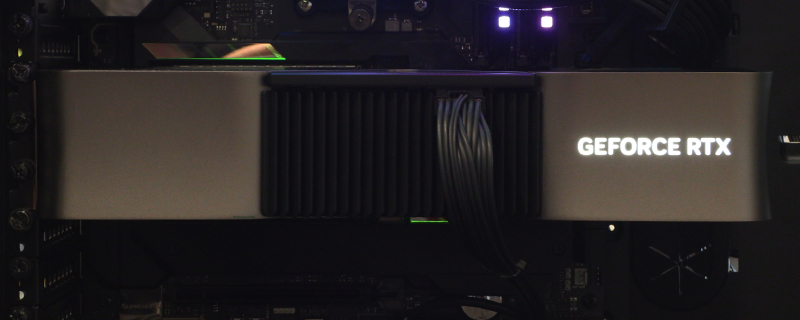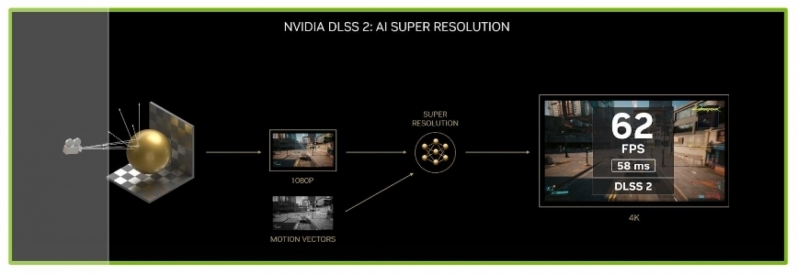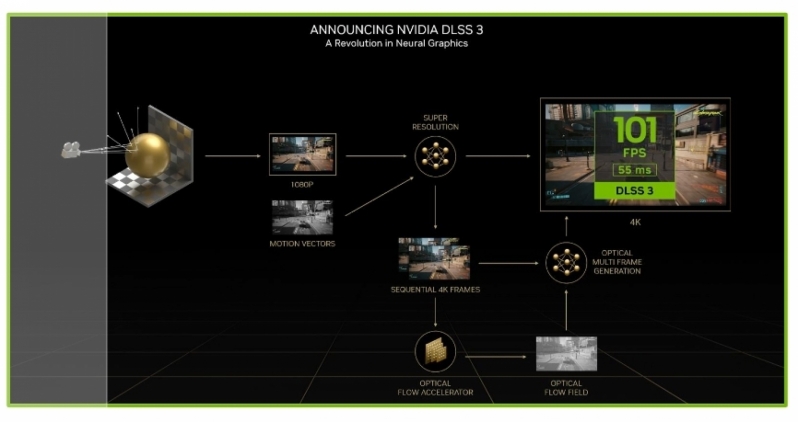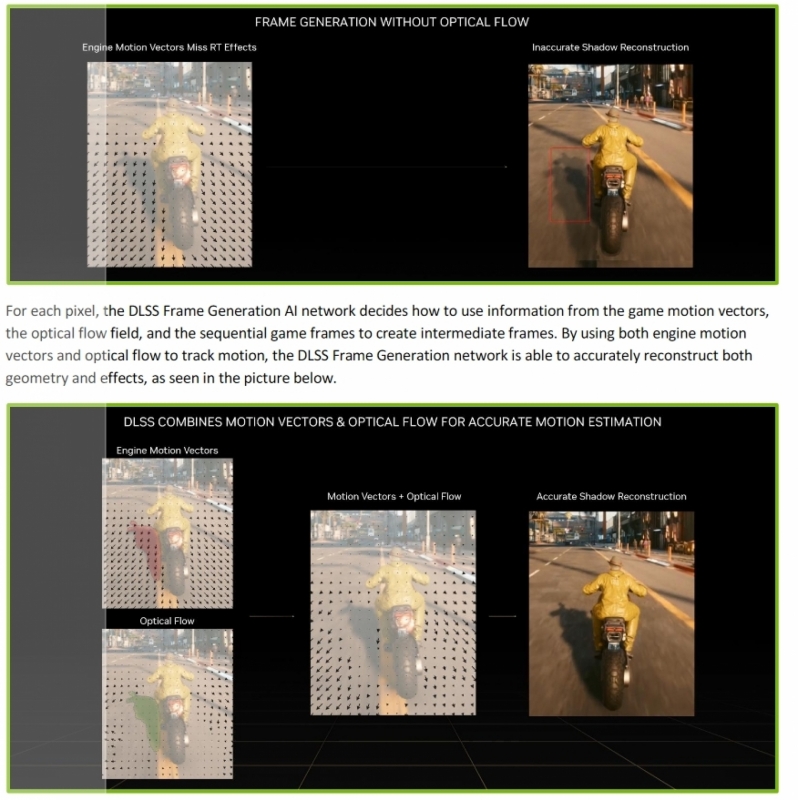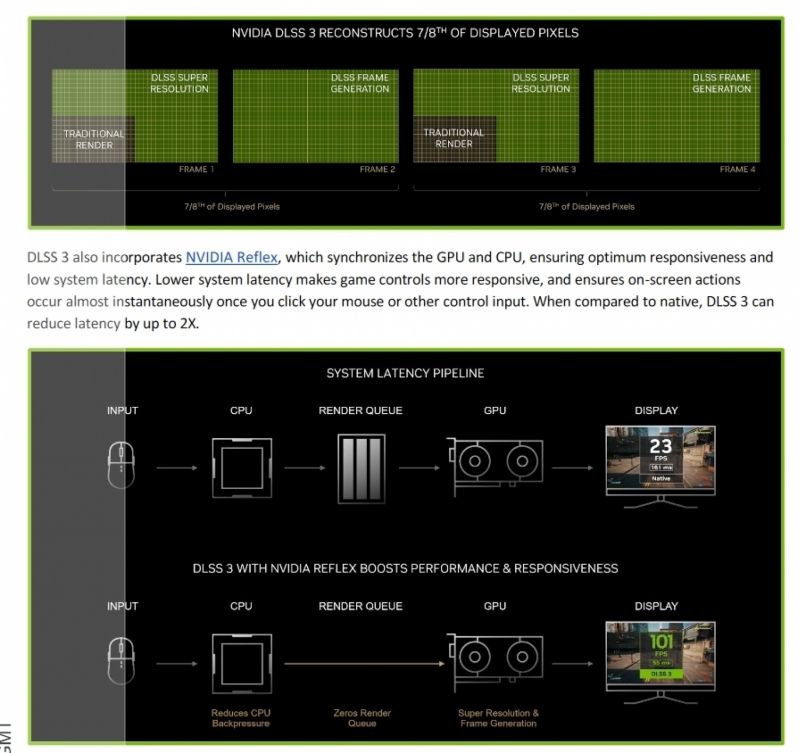Nvidia GeForce RTX 4090 Founders Edition Review
DLSS 3 and Framegen
The amount going on behind the scenes of the RTX 4090 is astounding. We don’t pretend to be experts on this deep level of render pipelines and pathing, but then we’ve never tried to be. We concentrate, as you dear reader do, in the end result. How something gets there can be largely of interest to a niche audience, but the end result is something we can all understand. You don’t need to understand physics, chemistry and biology to know why a meal tastes good, so long as it does. Nonetheless we’ll attempt to give you a layman’s explanation for what is new with the DLSS 3 technology and why it’s capable of bringing you improved frame rates. If you want a deeper dive then naturally Nvidia have you covered, but we’re a review website not a technical journal. Know, before we begin, that this isn’t a technology which is going to work on the Turing or Ampere architecture. It’s Ada Lovelace or bust, we’re afraid. We’re as disappointed as you.
Currently our understanding of DLSS 2 is that it works like this. The game engine determines what should be visible and renders an image. Then the Nvidia DLSS works out how each pixel is moving within the screenspace and interpolates that to give you a higher resolution, sharper image without the additional performance overhead. Naturally, as with any “guesstimation” this can have limitations.
DLSS 3 takes a somewhat similar initial approach, but leverages its AI to pay far closer attention to what should be going on, what the image should look like, and where each pixel should be and will be. This not only gives a higher benefit in terms of raw performance, but also when it comes to accurately replicating what you see and should be seeing. The way they do this is with what they’re calling Optical Flow. This means DLSS actually looks at what is actually being rendered (the DLSS 2 way of doing things), then also looks at the current frame and the next frame, asks the game engine what it is expecting to render, and then performs the interpolation. Creating accurate frames without the need to be rendered. That at least is the – very simplified – theory.
Perhaps a clearer example is to use pictures. The arrows on the left show what the engine motion of each pixel is doing, and this can lead, because guesswork, to inaccuracies in the displayed image. But the new DLSS AI combines both the engine motion vectors and optical flow to give a much clearer picture (ha) of the expected image, giving you a smoother experience and more accurate image quality. It’s the best of both worlds.
We have to say the image below completely fries our brain. At the risk of sounding stupid, instead of the GPU rendering the frame it’s asked to and giving you what you see, the GPU is instead working out what you’re expecting to see and showing you that. Which feels to us like semantics. However, there is no denying the results. As a simile, as close as we can work out, instead of you telling your toaster how brown you like your bread and it toasting it to that level, it’s working out how brown you like your bread and toasting it to that level instead. That, guys, gals and non-binary pals, is why we’re in an office telling you what we understand rather than working at MIT inventing all this stuff.



